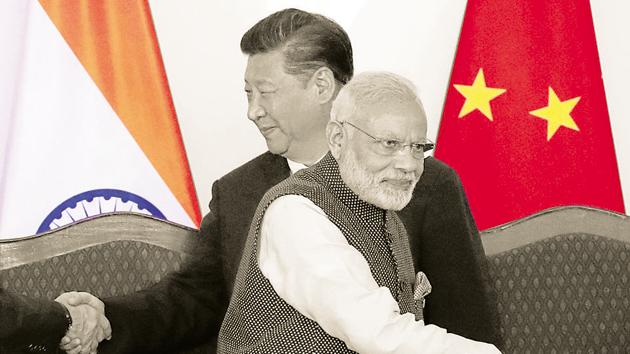Domestic constraints will impinge on the China policy |Opinion
China is India’s greatest strategic threat. Counter it, but retain the focus on Covid-19, economy, social cohesion
Neither the proposition that both India and China have enough space to grow nor the attempt to foster a close personal understanding between the top leaders of the two nations, can obscure the reality that the latter is India’s greatest strategic threat. The challenge is compounded by its nexus with Pakistan. Its recent move to establish new facts on the ground along the Line of Actual Control (LAC) is only the latest manifestation of its innate hostility.

The public grief and anger at the loss of 20 Indian Army personnel in the Galwan Valley are not easy to assuage. But this should not lead to emotion governing policy choices. Rather, the country’s political and security classes have to introspect calmly on the continuing validity of the basic postulates of India’s China policy set in place by late Prime Minister Rajiv Gandhi in 1988 and pursued by every government since. This demands, above all, to use a cricketing analogy, avoiding a domestic political spin and the adoption of Rahul Dravid’s careful rock-solid play, confidently conservative, never defensive.
Besides the China factor, there are domestic economic, social and political realities that impinge on India’s current external engagements which merit hard-headed examination. The economic expansion over the past two decades and, consequently, the emergence of a substantial market with growing potential contributed to the rise of the country’s global standing. Covid-19 has disrupted and damaged the economy, which had already slowed down prior to the outbreak. Notwithstanding the desire of some global businesses to look seriously at India as they decide to move part of their operations out of China, questions will inevitably arise about India’s immediate and mid-term future. These will increase and lead to doubts if perceptions arise of the weakening of the country’s social fabric and the cohesion of its political class.
Indian foreign policy managers will necessarily have to take into account the present and anticipate future global perceptions about India. They will also have to assess the resources available for the implementation of foreign policy objectives. Their analysis on both fronts can neither be based on exuberant expectations nor on pessimism. The watch words have to be balance and caution combined with trust in the nation’s resilience in charting the course.
While the pandemic has exposed governance lapses, social faultlines and the economic frailties of all countries, it will lead to a focus on models of development pursued by emerging and poor countries. India, too, cannot escape scrutiny in this. Inevitably, comparisons will be drawn on how India has dealt with the situation as compared with other emerging economies, especially China. In this context, only the most knowledgeable foreign observers will make allowances for India’s size and diversity and the complexities of its quasi-federal polity and consequent administrative constraints.
There is little doubt that many external groups, especially the Delhi-based diplomatic community, would have followed developments relating to the migrant labour situation, the administrative failure to foresee their movement, the initial confusion, and the spectacle of thousands taking to the highways. This could not have drawn much appreciation. This would have been so even while some gratitude was expressed for medical supplies to many countries and keeping up with international engagements.
What the international community will now observe are the corrective measures, and how quickly they are put in place to mitigate the impact on health and revive the economy. The Narendra Modi government has announced a slew of reforms. This is positive and forward-looking, and will create a measure of confidence of India’s determination to address the situation on many economic fronts. However, the government’s focus on self-reliance needs to be placed in the context of the valid aspiration for an increased manufacturing base, including in hi-tech areas. This is because the term is associated with an earlier time and with a radically different ideological development model.
In this troubling background, Indian decision-makers will have to primarily focus on the core aspects of engagements. This must necessarily begin with South Asia where China is chipping away at Indian interests. India’s attempts at greater integration of this region need to be invigorated, coupled with the message that it will not accept any compromise of its security interests. No fresh initiatives with Pakistan are needed until it overcomes its paroxysms of outrage consequent to changes in Jammu and Kashmir last year. The approach to Afghanistan needs an injection of realism with regard to the Taliban.
Other core areas that need attention are the upgradation of the relationship with the United States, cultivating affinities with democratic countries in the Indo-Pacific region, and maintaining a balanced approach towards West Asia. India’s diplomatic energies need to remain focused on these, and not get diffused at a time when the primary area of concern has inevitably got to be domestic — the management of perhaps the greatest challenge independent India has faced arising from the coronavirus pandemic.
Vivek Katju is a former diplomat
The views expressed are personal






